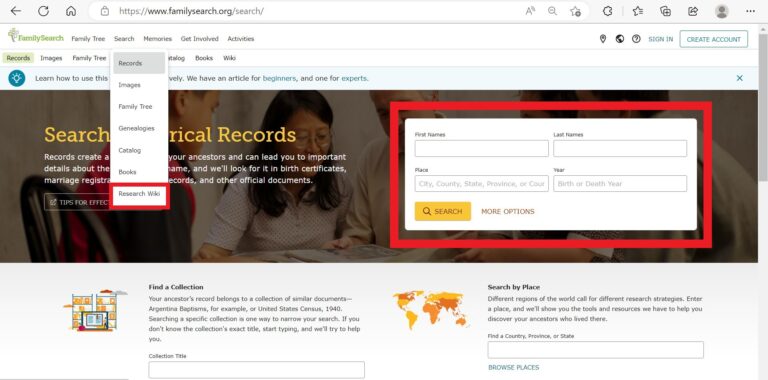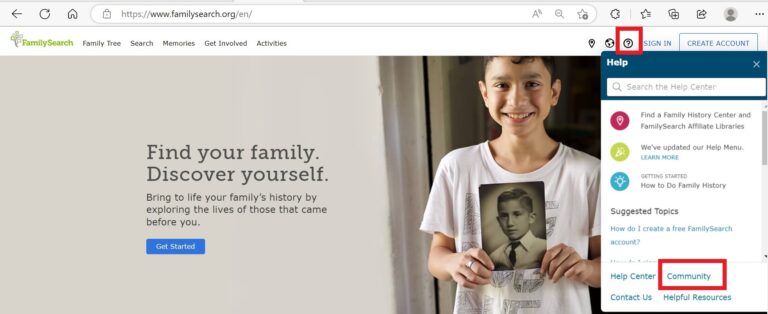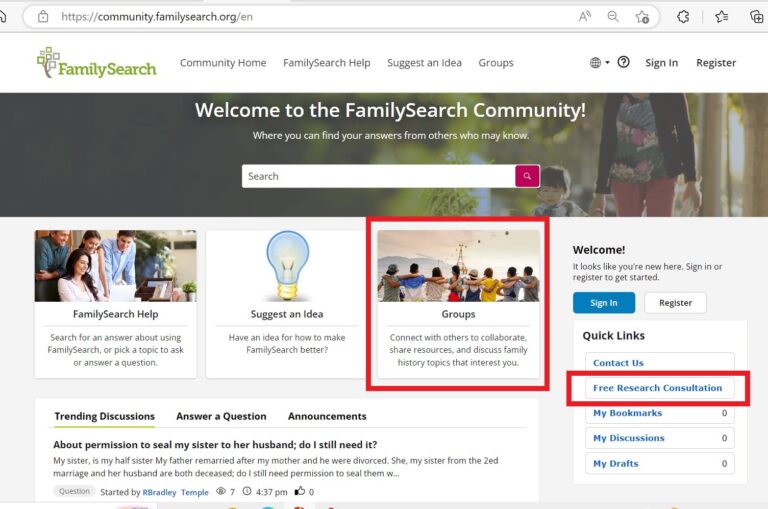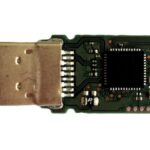Reading glasses, also known in the United States as “Cheaters”, are glasses one can buy over the counter make it easier to read without prescription glasses. You can apply the same strategy for transcribing ancestry documents. No, I don’t mean for you to buy “Cheaters”; what I mean is, here are six easy “cheaters” that you can apply to transcribe really old ancestry documents .
Writing Script
In the beginning, I was reading a will from the U.K. and the writing/script was so foreign to my eyes that I could not understand what I was reading. First, I sent a copy of the will to my cousin, Debbie and we both spent many hours of trying to transcribe this two-page document with little success. However, while working on this will I met another cousin from this line who was from the United Kingdom.
She told me she was very good at reading wills and explained that the secret to understanding them is that they take the form of a pattern. Once you get familiar with the pattern, you will understand most wills.
Cheaters 1: Monkey See Monkey Do
I sent her the will and she transcribed it and showed me the pattern and key words so I could do it myself in the future. By following along and doing some basic “Monkey see Monkey do”, Debbie and I learned the basics or writing pattern for old wills for most of the United Kingdom.
This same method I have applied over and over with my ancestry research, each time and with different cousins or friends. Currently, I am using this method on Leonard (who you may remember from previous posts).
I know my readers are probably asking why I spend so much time on a tree that isn’t even mine. It is very simple: I love helping people, expanding my learning and of course the hunt. He is not the first person I have helped with research, and he won’t be the last.
With this “Monkey-See-Monkey-Do” Method, I have cracked the key word basics for Latin Baptismal and marriage records for a place called “Koewacht”, which, on the Baptism record we were looking at, was spelled “Coewagt”. Koewacht is also a place that was originally in the Netherlands and has been divided where one part is in the Netherlands and the other is in Belgium.
Once Leonard told me Koewacht was what I need to look for, I was able to find the other records. Besides the Latin parish records, I have learned the civil registration key words for most of the Netherlands and Belgium records too! Leonard has, of course, the language and the history of the area. I would have never known that Coewagt was Koewacht as I actually tried find Coewagt on Google maps and, of course, couldn’t find it.
The main method for Monkey-See-Monkey Do is I am always paired with someone more experienced in the history, the language and/or script. It is a win/win situation as I learn the key words so I can eventually transcribe the document or record on my own and my teacher furthers their tree.
Besides Monkey-see monkey-do, let me also include the other cheaters which I call “tapping into the FamilySearch website”.
Cheaters 2, 3, 4 & 5: FamilySearch
Many years ago, when I was working on my German parish records which were in Latin and German, I again had a cousin that was willing to transcribe and help me learn.
Cheaters 2 FamilySearch Wiki:
In order to learn or be productive, I had to find out more about Latin parish key words and that is when I just googled it and ended up finding my favorite learning tool called FamilySearch Research Wiki.
FamilySearch has so much to see and do and they are adding new stuff all the time. Here are a couple of easy ways to find the FamilySearch Research Wiki.
- At the bottom of the page, click Site Map. Look for the heading Get Help and Research Wiki is listed fourth in the list.
- On the main page of FamilySearch top left menu bar click search, and on the drop down menu, click “Research Wiki” or click this link to be taken to it.
- Records Search by Place or Location is another easy way to find Research Wiki, as it is already on the place that you imputed to research. What is very helpful is that, besides having the research wiki on the page, it also links you to courses that are video about certain areas like learning to read a parish record. To find it, click menu search, then records and then choose how you want to record search or click this link. I like using the map and narrow my search.
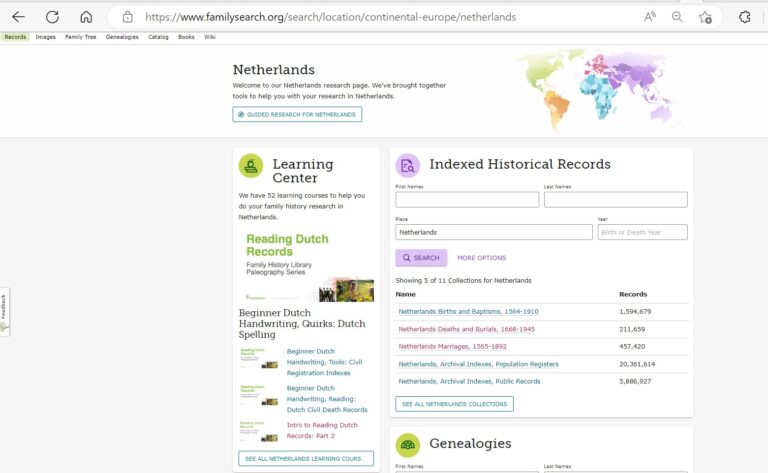
Cheaters 3 FamilySearch Learning Center:
If you do not have a buddy to help you learn, then another way is to utilize the FamilySearch Learning Center. As shown above in the records by a specific location, it gives you suggested learning courses from the Learning Center and, if you don’t see any writing courses listed, then go the actual Learning center page and do a quick search for it.
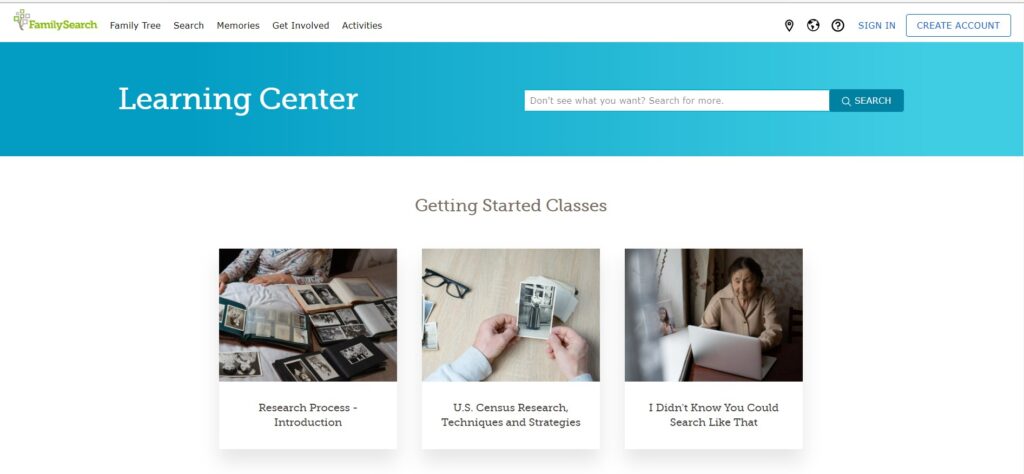
Cheaters 4: Community Groups:
Community groups are another way to get some help for when you are having a difficult time reading an old or even a new document. Not all handwriting is perfect. A group is an alternative way when you have nobody else to turn to. I have only used this once trying to get clarification on a surname that I also wrote about in Going The Extra Mile Can Give You Unusual Results. Several Group members did respond, but nobody gave me a definite answer or clarification. You do not need to be a member of the group to see the resources, but if you want to post to the discussion you will need to click on the join button.
This leads me to the last cheater for FamilySearch: Free Research Consultation.
Cheaters 5: FamilySearch Free Research Consultation:
Maybe you have a question about a particular document and need a little more help than the community or you never received a good answer. If so, then it is time to schedule a free 20-minute consultation with a genealogist in the country that you have questions on. Let me tell you about one time I used it myself.
When I scheduled my consultation, it was not that I needed clarification on a document, but I was trying to find out how I could find where my surname came from, which I think is hilarious surname name and if you want to know what it is, read this post, RootsTech Connection: Important Discovery About my Surname. What is even funnier is that my grandfather changed the name and it is still not any better. For the blog it worked perfectly shortened even further to Dru as it is now the perfect spoof on the books “Nancy Drew” the girl detective.
Unfortunately, this time they weren’t prepared for my question, as it was a rather unusual one. However, they do a fine job with more general questions and just because they couldn’t help me this one time doesn’t mean I will not use them; I just haven’t had another big dead end. Another nice thing is that this is not just a one-time deal; you can sign up more than once for the consultations.
Both Community Groups and Scheduling 20-minute consultations can be found in the same location. To locate it on your own, see the photos below Or Click this link to directly go there.
The last cheater is an easy one and it involves using the internet.
Cheaters 6: Google Translate
Google translate is easy to find: just google it and select the language and enter the word/s. Here’s another trick I use especially when visiting foreign websites or things that are written in a foreign language like on FamilySearch for the records names: Now, I am not sure if all browsers do this, but I use Edge and if I just right click somewhere on the page, in the dropdown menu is an option to translate to English.
It is also set with Edge that, when I come to a foreign website, it will ask me if I want it translated. Sometimes I do not do this right away, as with records showing the transcription in the original language, that is what I want because sometimes the translation is a little off and doesn’t make sense.
Cheaters
One emphasis I want to make about using cheaters, especially with monkey-see-monkey-do, when a cousin or friend is helping me with my tree, I always make sure to reciprocate in kind. I usually put something like this “Please let me know if I can help you with your ancestry”, and usually they take me up on my offer. So, we both end up with a win-win situation.
Using these 6 cheaters has helped me learn how to read old documents better, but it does take time. You might find other cheaters and I would love to hear any you find as this website is a place to share too!

